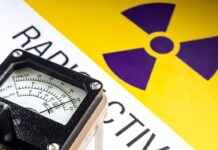Radiation plays an indispensable role in diagnostic imaging, enabling healthcare professionals in India to diagnose and treat a wide range of medical conditions. However, the use of radiation comes with potential risks, necessitating stringent regulations to ensure the safety of patients and healthcare workers. In this article, we will provide an insightful guide to the radiation protection regulations in India, helping diagnostic centers understand what they need to know to ensure compliance and safety.
The Role of the Atomic Energy Regulatory Board (AERB): The Atomic Energy Regulatory Board (AERB) is the primary regulatory authority in India responsible for overseeing the use of radiation in various sectors, including healthcare. It establishes and enforces regulations to protect individuals from the harmful effects of ionizing radiation.
Licensing and Authorization: Diagnostic centers in India that use radiation-emitting equipment must obtain the necessary licenses and authorizations from the AERB. This includes X-ray machines, CT scanners, fluoroscopy devices, and other radiological equipment. Obtaining the required licenses is the first step toward compliance.
Radiation Safety Officers (RSOs): Each diagnostic center must designate a Radiation Safety Officer (RSO) who is responsible for ensuring compliance with radiation safety regulations. The RSO plays a critical role in overseeing radiation safety practices, maintaining records, and conducting safety training for staff.
Personnel Dosimetry: Personnel working with radiation-emitting equipment must wear dosimetry badges. These badges measure the radiation exposure of individuals over time. Regular monitoring helps ensure that healthcare workers do not exceed permissible radiation dose limits.
Radiation Shielding and Safety Measures: Diagnostic centers must adhere to specific requirements for radiation shielding in their facilities. This includes lead-lined walls, lead aprons, thyroid collars, and lead glasses, all designed to minimize radiation exposure to patients and staff. Ensuring the proper use and maintenance of these safety measures is essential.
Quality Assurance and Audits: To maintain compliance with AERB regulations, diagnostic centers should establish quality assurance programs. Regular audits and inspections by the AERB ensure that centers are following best practices in radiation safety.
Patient Consent and Communication: Diagnostic centers must obtain informed consent from patients before conducting any radiological procedures involving ionizing radiation. Additionally, clear communication regarding the benefits and risks of the procedure is crucial.
Emergency Response Plans: In compliance with AERB regulations, diagnostic centers must have detailed emergency response plans in place to address any radiation-related incidents or accidents promptly.
Conclusion: Radiation protection regulations in India, enforced by the Atomic Energy Regulatory Board, are in place to safeguard the health and safety of patients and healthcare professionals. Diagnostic centers play a pivotal role in adhering to these regulations by obtaining licenses, appointing RSOs, ensuring radiation safety measures, and maintaining stringent quality control.
By understanding and complying with these regulations, diagnostic centers can continue to provide essential healthcare services while prioritizing the well-being of all individuals involved. Staying up-to-date with evolving regulations is essential, as the safety of patients and healthcare professionals remains paramount in the use of diagnostic radiology.








